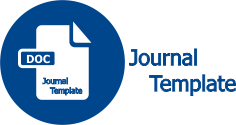Pengembangan Instrumen Tes Diagnostik Tiga Tingkat untuk Mengidentifikasi Miskonsepsi Peserta Didik pada Materi Pokok Laju Reaksi
(1) Universitas Negeri Makassar
(2) Universitas Negeri Makassar
(3) Universitas Negeri Makassar
(*) Corresponding Author
DOI: https://doi.org/10.26858/cer.v6i1.39494
Abstract
Keywords
Full Text:
PDFReferences
Adadan, E., & Savasci, F. 2012. An Analysis of 16–17-Year-Old Students’ Understanding of Solution Chemistry Concepts Using a Two-Tier Diagnostic Instrument. International Journal of Science Education, 34(4), 513–544. https://doi.org/10.1080/09500693.2011.636084.
Arroio, A. 2016. The Representational Levels: Influences and Contributions to Research in Chemical Education. Journal of Turkish Science Education, 13(1), 3–18. https://doi.org/10.12973/tused.10153a
Arslan, H. O., Cigdemoglu, C., & Moseley, C. 2012. A Three-Tier Diagnostic Test to Assess Pre-Service Teachers’ Misconceptions about Global Warming, Greenhouse Effect, Ozone Layer Depletion, and Acid Rain. International Journal of Science Education, 34(11), 1667–1686. https://doi.org/10.1080/09500693.2012.680618.
Asmalinda, A., Ruslan, R., & Sulastry, T. 2019. Pengembangan Instrumen Tes Diagnostik Tiga Tingkat dan Alternatif Remedial pada Pembelajaran Kimia. Chemistry Education Review (CER). https://doi.org/10.26858/cer.v2i2.8671.
Banerjee, A. C. 1991. Misconceptions of Students and Teachers in Chemical Equilibrium. International Journal of Science Education, 13(4), 487–494. https://doi.org/10.1080/0950069910130411.
Barke, H.-D., Hazari, A., & Yitbarek, S. 2009. Misconceptions in Chemistry: Addressing Perceptions in Chemical Education. Choice Reviews Online, 46(12), 46-6810-46–6810. https://doi.org/10.5860/Choice.46-6810.
Beichner, R. J. 1994. Testing Student Interpretation of Kinematics Graphs. American Journal of Physics, 62(8), 750–762. https://doi.org/10.1119/1.17449.
Bilgin, İ., Uzuntiryaki, E., & Geban, O. 2003. Student’s Misconceptions on the Concept of Chemical Equilibrium Öğrencilerin Kimyasal Denge Konusundaki Kavram Yanılgıları. 8.
Budiningsih, S. 2013. Pengembangan Instrumen Diagnostik Three-Tier untuk Mengidentifikasi Miskonsepsi Listrik Dinamis Siswa Kelas X SMA.
Cakmakci, G. 2010. Identifying Alternative Conceptions of Chemical Kinetics among Secondary School and Undergraduate Students in Turkey. Journal of Chemical Education, 87(4), 449–455. https://doi.org/10.1021/ed8001336
Cetin-Dindar, A., & Geban, O. 2011. Development of A Three-Tier Test to Assess High School Students’ Understanding of Acids and Bases. Procedia - Social and Behavioral Sciences, 15, 600–604. https://doi.org/10.1016/j.sbspro.2011.03.147.
Chandrasegaran, A. L., Treagust, D. F., & Mocerino, M. 2007. The Development of A Two-Tier Multiple-Choice Diagnostic Instrument for Evaluating Secondary School Students’ Ability to Describe and Explain Chemical Reactions Using Multiple Levels of Representation. Chem. Educ. Res. Pract., 8(3), 293–307. https://doi.org/10.1039/B7RP90006F
Cook, M., Wiebe, E. N., & Carter, G. 2008. The Influence of Prior Knowledge on Viewing and Interpreting Graphics with Macroscopic and Molecular Representations. Science Education, 20.
Elvia, R., Rohiat, S., & Ginting, S. M. 2020. Identifikasi Miskonsepsi Mahasiswa pada Pembelajaran Daring Matematika Kimia melalui Tes Diagnostik Three Tier Multiple Choice. Hydrogen: Jurnal Kependidikan Kimia, 9(2), 84. https://doi.org/10.33394/hjkk.v9i2.4422.
Fahmi, F., & Irhasyuarna, Y. 2017. Misconceptions of Reaction Rates on High School Level in Banjarmasin. IOSR Journal of Research & Method in Education (IOSRJRME), 07(01), 54–61. https://doi.org/10.9790/7388-0701045461.
Fariyani, Q., & Rusilowati, A. 2015. Pengembangan Four-Tier Diagnostic Test Untuk Mengungkap Miskonsepsi Fisika Siswa Sma Kelas X. 9.
Gurel, D. K. 2015. A Review and Comparison of Diagnostic Instruments to Identify Students’ Misconceptions in Science. 20.
Habiddin, H., & Page, E. M. 2019. Development and Validation of a Four-Tier Diagnostic Instrument for Chemical Kinetics (FTDICK). Indonesian Journal of Chemistry, 19(3), 720. https://doi.org/10.22146/ijc.39218.
Hackling, M. W., & Garnett, P. J. 1985. Misconceptions of Chemical Equilibrium. European Journal of Science Education, 7(2), 205–214. https://doi.org/10.1080/0140528850070211.
Hakimah, N., Muchson, M., Herunata, H., Permatasari, M. B., & Santoso, A. 2021. Identification Student Misconceptions on Reaction Rate Using A Google Forms Three-Tier Tests. 020020. https://doi.org/10.1063/5.0043114.
Ibrahim, M. 2019. Model Pembelajaran P20C2R untuk Mengubah Konsepsi IPA Siswa. Zifatama Jawara.
Jusniar, J., Effendy, E., Budiasih, E., & Sutrisno, S. 2020a. Developing a Three-Tier Diagnostic Instrument on Chemical Equilibrium (TT-DICE). Educación Química, 31(3), 84. https://doi.org/10.22201/fq.18708404e.2020.3.72133.
Jusniar, J., Effendy, E., Budiasih, E., & Sutrisno, S. 2020b. Misconceptions in Rate of Reaction and their Impact on Misconceptions in Chemical Equilibrium. European Journal of Educational Research, 9(4), 1405–1423. https://doi.org/10.12973/eu-jer.9.4.1405.
Kimberlin, C. L., & Winterstein, A. G. 2008. Validity and Reliability of Measurement Instruments Used in Research. American Journal of Health-System Pharmacy, 65(23), 2276–2284. https://doi.org/10.2146/ajhp070364.
Kolomuç, A., & Tekin, S. 2011. Chemistry Teachers’ Misconceptions Concerning Concept of Chemical Reaction Rate. International Journal of Physics & Chemistry Education, 3(2), 84–101. https://doi.org/10.51724/ijpce.v3i2.194.
Kurt, S., & Ayas, A. 2012. Improving Students’ Understanding and Explaining Real Life Problems on Concepts of Reaction Rate by Using a Four Step Constructivist Approach. 14.
Laksono, P. J. 2020. Pengembangan Three Tier Multiple Choice Test pada Materi Kesetimbangan Kimia Mata Kuliah Kimia Dasar Lanjut. Orbital: Jurnal Pendidikan Kimia, 4(1), 44–63. https://doi.org/10.19109/ojpk.v4i1.5649.
Ni’mah, M., Subandi, S., & Munzil, M. 2020. Keefektifan Pembelajaran POGIL dengan Strategi Konflik Kognitif untuk Mengurangi Miskonsepsi pada Materi Laju Reaksi Kelas XI SMA. Jurnal Pendidikan: Teori, Penelitian, dan Pengembangan, 5(9), 1257. https://doi.org/10.17977/jptpp.v5i9.14010.
Özmen, H. 2008. Determination of Students’ Alternative Conceptions about Chemical Equilibrium: A Review of Research and The Case of Turkey. Chem. Educ. Res. Pract., 9(3), 225–233. https://doi.org/10.1039/B812411F.
Papaphotis, G., & Tsaparlis, G. 2008. Conceptual Versus Algorithmic Learning in High School Chemistry: The Case of Basic Quantum Chemical Concepts. Part 2. Students’ Common Errors, Misconceptions and Difficulties in Understanding. Chem. Educ. Res. Pract., 9(4), 332–340. https://doi.org/10.1039/B818470B.
Peşman, H., & Eryılmaz, A. 2010. Development of a Three-Tier Test to Assess Misconceptions about Simple Electric Circuits. The Journal of Educational Research, 103(3), 208–222. https://doi.org/10.1080/00220670903383002.
Taber, K. S. (Ed.). 2009. Progressing Science Education (Vol. 37). Springer Netherlands. https://doi.org/10.1007/978-90-481-2431-2.
Talanquer, V. 2011. Macro, Submicro, and Symbolic: The Many Faces of The Chemistry “Triplet.” International Journal of Science Education, 33(2), 179–195. https://doi.org/10.1080/09500690903386435.
Treagust, D. F. 1988. Development and Use of Diagnostic Tests to Evaluate Students’ Misconceptions in Science. International Journal of Science Education, 10(2), 159–169. https://doi.org/10.1080/0950069880100204.
Tuckman, B. W., & Harper, B. E. 2012. Conducting Educational Research (6th Edition). New York: Rowman & Littlefield Publishers, INC.
Article Metrics
Abstract view : 373 times | PDF view : 44 timesRefbacks
- There are currently no refbacks.
Jurnal dipublikasikan oleh: Program Studi Pendidikan Kimia
Program Pascasarjana Universitas Negeri Makassar
Alamat JL. Bonto Langkasa Gunung Sari Makassar, 90222
Kampus PPs UNM Makassar Gedung AD ruang 406 Lt 4, Indonesia.Phone 082393643737/085145825311/085242228678
CER UNM Indexed by:

Chemistry Education Review (CER) is licensed under a Creative Commons Attribution-NonCommercial 4.0 International License.










